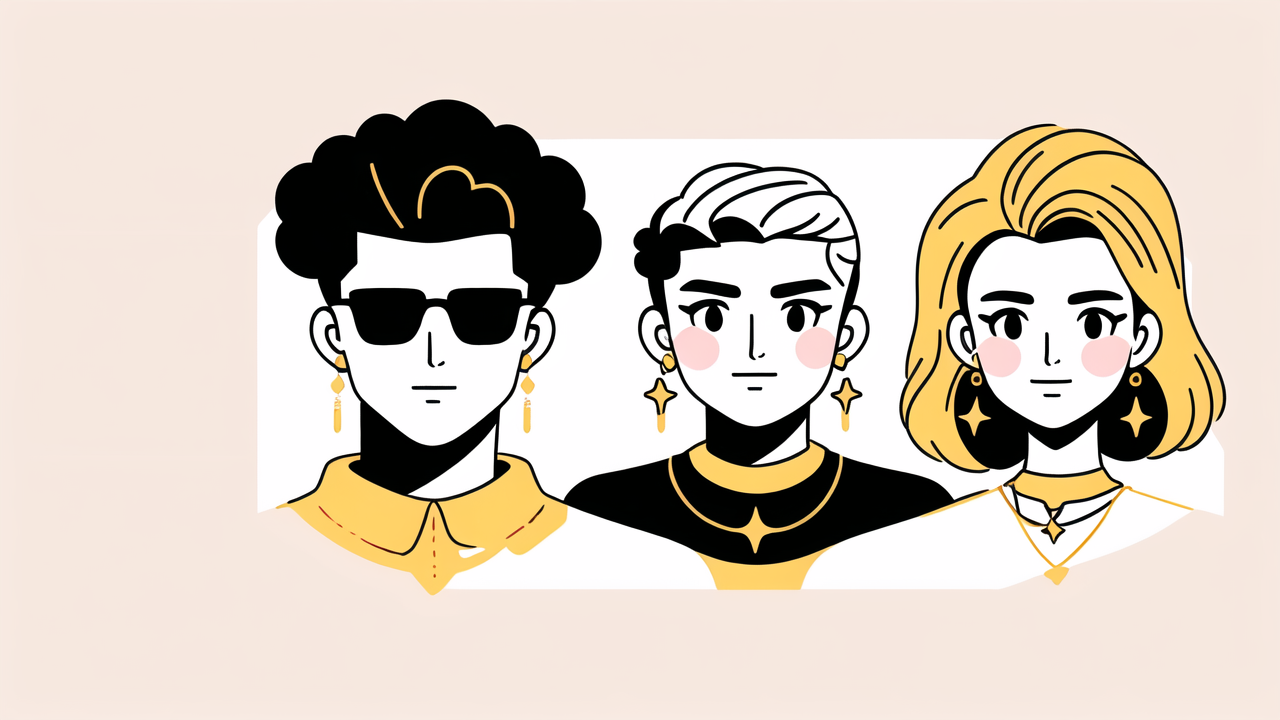Understanding the Customization in Hip Hop Jewelry
The Rise of Personalization in Hip Hop Fashion
Hip hop fashion has always been about self-expression. In recent years, personalization has taken center stage. Custom jewelry lets artists and fans show their unique style. It's not just about bling anymore. It's about telling a story through your accessories.

Personalized pieces have become a must-have in the hip hop world. From name pendants to custom grills, everyone wants something one-of-a-kind. This trend reflects the genre's focus on individuality and standing out from the crowd. It's a way to showcase success and personal brand.
The rise of social media has fueled this trend. Artists and fans alike share their custom pieces online. This visibility has made personalized jewelry more desirable than ever. It's not just for rappers anymore. Fans want to emulate their favorite artists with their own unique twist.
Key Features that Define Custom Hip Hop Jewelry
Custom hip hop jewelry is all about making a statement. Size matters in this world. Big, bold pieces catch the eye and demand attention. But it's not just about being flashy. Details are crucial in creating truly unique items.
Materials play a big role in custom pieces. Gold, platinum, and diamonds are staples. But designers are also using unique gems and metals to stand out. Color is another key feature. Vibrant stones and enamel work add personality to pieces.
Intricate designs set custom jewelry apart. Laser engraving allows for detailed patterns and text. 3D modeling creates complex shapes and structures. These techniques let artists bring their wildest ideas to life.
Symbolism is often a central feature. Many pieces incorporate personal logos or meaningful symbols. Others reference cultural icons or hip hop history. This adds depth and meaning to the jewelry.
The Importance of Quality in Custom Hip Hop Jewelry
Selecting the Right Diamonds and Gemstones
Quality is paramount in custom hip hop jewelry. The stones used can make or break a piece. Diamonds are a favorite, but not all diamonds are equal. The 4 Cs - cut, color, clarity, and carat - are crucial.

Cut affects how light interacts with the stone. A well-cut diamond sparkles more. Color ranges from colorless to yellow. For diamonds, less color usually means more value. Clarity refers to the absence of inclusions. Fewer flaws mean a higher quality stone.
Carat weight is important, but bigger isn't always better. A smaller, high-quality diamond can outshine a larger, flawed one. Balance is key in choosing the right stones for a piece.
Colored gemstones are also popular in hip hop jewelry. Quality here depends on color intensity and clarity. The source of the stone can affect its value. Ethical sourcing is becoming more important to many buyers.
The Role of Craftsmanship in Jewelry Design
Craftsmanship is what turns raw materials into wearable art. In custom hip hop jewelry, skill is everything. A good craftsman can bring any design to life. They understand how to work with different metals and stones.
Setting stones is a crucial skill. Prong settings show off diamonds. Bezel settings protect softer gems. Pave settings create a surface of continuous sparkle. The right setting enhances the beauty of the stones.
Metal work is another important aspect. Casting creates the basic shape of a piece. But hand finishing gives it character. Polishing, engraving, and texturing all add to the final look.
Attention to detail sets great craftsmen apart. They ensure every element is perfect. From the clarity of engravings to the security of clasps. Quality craftsmanship makes jewelry last. It turns a flashy accessory into a lasting heirloom.
Trends in Custom Hip Hop Jewelry Design
The Latest Design Innovations in Hip Hop Jewelry
Innovation drives the world of custom hip hop jewelry. New technologies are changing what's possible. 3D printing allows for complex shapes that were once impossible. This opens up new design possibilities.

Mixed metals are trending. Combining gold, silver, and rose gold creates unique looks. It adds depth and interest to pieces. Designers are also experimenting with new alloys. These can offer different colors and properties.
Modular designs are gaining popularity. These allow wearers to customize their look day by day. Pendants that can be swapped out or chains that can be combined offer versatility.
Sustainable and ethical jewelry is a growing trend. Lab-grown diamonds offer a conflict-free alternative. Recycled metals reduce environmental impact. These options appeal to socially conscious consumers.
Celebrity Influence on Custom Jewelry Trends
Celebrities have always been trendsetters in hip hop jewelry. Their choices influence what fans want. When a star debuts a new piece, designers often see increased demand for similar styles.
Some celebrities partner directly with jewelers. These collaborations result in unique collections. They often reflect the artist's personal style and brand. These pieces become instant collector's items.
Social media amplifies celebrity influence. Instagram and TikTok showcase new jewelry instantly. Fans can see details up close. This immediate exposure can start trends overnight.
But it's not just about copying. Fans take inspiration from celebrity pieces to create their own unique designs. They might use similar elements but add their own personal twist. This keeps the custom jewelry scene fresh and evolving.
In conclusion, custom hip hop jewelry is more than just accessories. It's a form of self-expression, a marker of success, and a canvas for innovation. As trends evolve, one thing remains constant: the desire for unique, high-quality pieces that tell a personal story.






